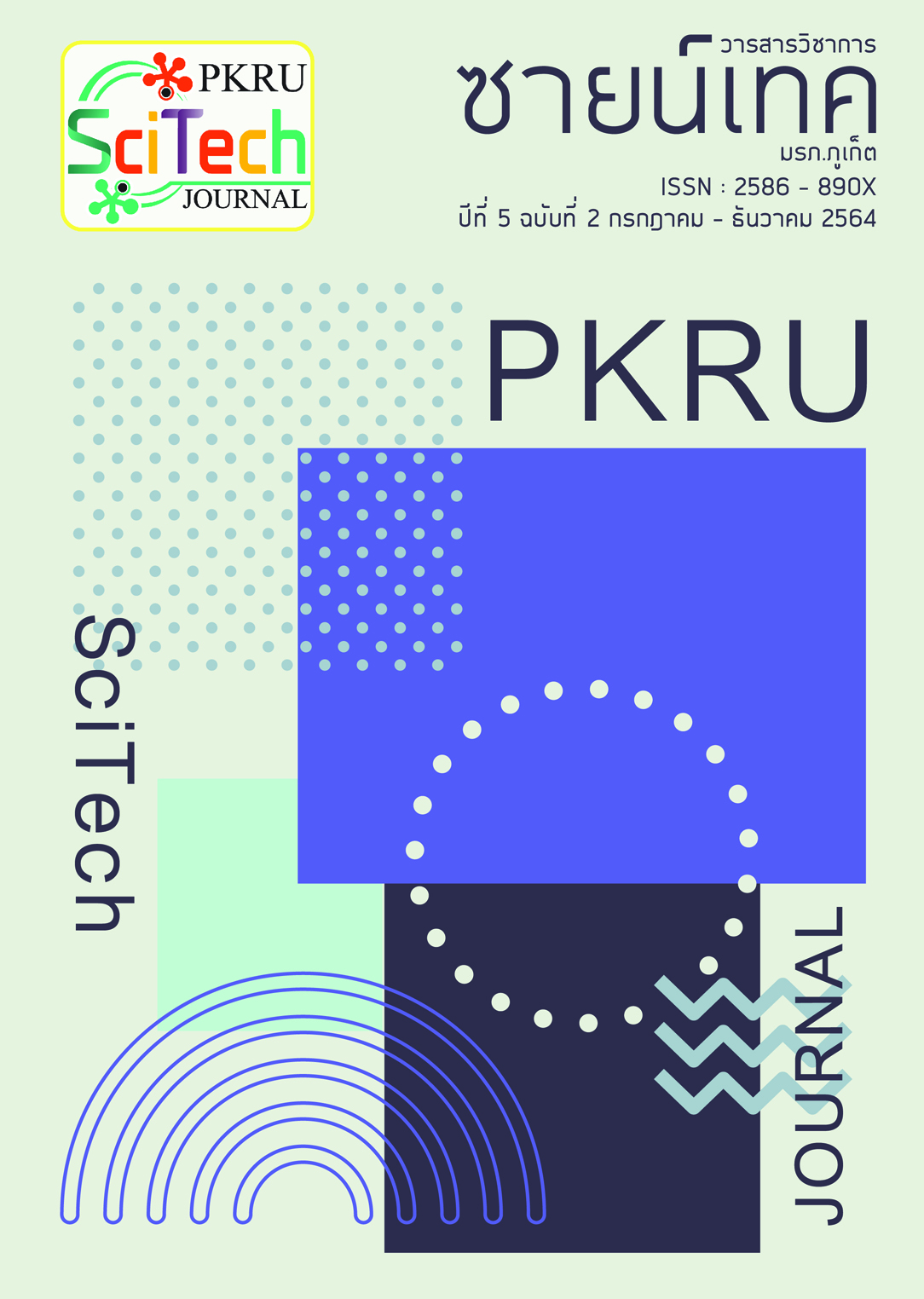Mathematical Model for Controlling the Spread of Hepatitis B Virus by Education Campaign
Main Article Content
Abstract
This research aimed to develop and analyze the stability of mathematical models for controlling the spread of hepatitis B virus by the educational campaign in Phuket. The model was analyzed using standard methods, the equilibrium point, stability of the equilibrium points and analytic solutions. Mathematical model for the rate of educational campaign on the spread of hepatitis B virus was studied to find the numerical solutions. Four nonlinear differential equations were obtained from the developed mathematical model with disease, disease-free equilibrium, and basic reproductive number. The results of the mathematical model analysis revealed that the rate of an educational campaign for the spread of hepatitis B is a factor that affected the basic reproductive number. The higher rate of educational campaign resulted in the lower basic reproductive number. Furthermore, if the at-risk population has limited understanding about the spread of hepatitis B, the disease will spread faster.
Article Details
- The original content that appears in this journal is the responsibility of the author excluding any typographical errors.
- The copyright of manuscripts that published in PKRU SciTech Journal is owned by PKRU SciTech Journal.
References
ธีรวัฒน์ นาคะบุตร. (2546). ตัวแบบเชิงคณิตศาสตร์ (พิมพ์ครั้งที่ 1). นครปฐม: สำนักพิมพ์สถาบันราชภัฏนครปฐม.
อนุวัตร จิรวัฒนพาณิช, อนุรักษ์ วีระประเสริฐสกุล, สุดาทิพย์ หาญเชิงชัย, และจุฬาลักษณ์ ใจอ่อน. (2559). ตัวแบบเชิงคณิตศาสตร์ SEIR สำหรับการควบคุมการแพร่ระบาดของโรคอีสุกอีใสโดยการรณรงค์ให้ความรู้. วารสารวิชาการมหาวิทยาลัยราชภัฏภูเก็ต, 13(2), 254-275.
Naowarat, S., Tawarat, W., & Tang, I. M. (2011). Control of the Transmission of Chikungunya Fever Epidemic Through the use of Adulticide. Science Publication, 6, 558-565.
สุรพล เกาะเรียนอุดม. (2561). การตรวจวินิจฉัยไวรัสตับอักเสบบีและซี. วารสารโรคเอดส์, 30(3), 113-128.
ภัทรธิดา สงวนหมู่. (2556). การจำแนกทางพันธุกรรมของไวรัสตับอักเสบบีที่เกี่ยวข้องกับมะเร็งตับ. วิทยานิพนธ์ ปริญญาวิทยาศาสตรมหาบัณฑิต. กรุงเทพฯ: จุฬาลงกรณ์มหาวิทยาลัย.
บัณฑิตย์ อันยงค์. (2558). ตัวแบบเชิงคณิตศาสตร์สำหรับการแพร่ระบาดของโรคไข้เลือดออกโดยใช้การรณรงค์ให้ความรู้ กรณีศึกษาจังหวัดภูเก็ต. รายงานการวิจัย. ภูเก็ต: มหาวิทยาลัยราชภัฏภูเก็ต.
Sangthongjeen, S., Sudchumnong A., & Naowarat, S. (2015). Effect of Educations Campaign on Transmission Model of Conjunctivitis. Australian Journal of Basic and Applied Sciences, 9(7), 811-815.
Kermack, W. O., & McKendrick, A. G. (1927). A Contribution to the Mathematical Theory of Epidemics. The Royal Society of London, 115, 700-721.
Van den Driessche, P., & Watmough, J. (2002). Reproductive numbers and sub-threshold endemic equilibria for compartment models of disease transmission. Mathematical Biosciences, 180, 29-48.
Anderson, R. M., & May, R. M. (1991). Infectious diseases of humans: dynamics and control (1st edition). United Kingdom: Oxford University Press.
Brauer, F., Driessche, P., & Wu, J. (2008). Mathematical Epidemiology (1st edition). Canada: Springer-Verlag Berlin Heidelberg.
อรวรรณ ตันสุย, และพันธนี พงศ์สัมพันธ์. (2556). แบบจำลองการระบาดของโรคอีสุกอีใสในประเทศไทย. วารสารวิทยาศาสตร์ลาดกระบัง, 22(1), 39-52.

